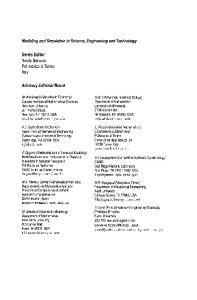Kinetic Equations from Hamiltonian Dynamics: The Markovian Approximations
The goal of non-equilibrium statistical mechanics is to explain the macroscopic behavior of matter from the dynamics of its microscopic constituents, i.e. atoms or molecules. Because of the large number of particles involved, this is a rather ambitious pr
- PDF / 13,732,601 Bytes
- 219 Pages / 481.856 x 691.745 pts Page_size
- 23 Downloads / 321 Views
KINETIC THEORY AND GAS DYNAMICS
EDITED BY
C. CERCIGNANI POLITECNICO DI MILANO
SPRINGER-VERLAG WIEN GMBH
Le spese di stampa di questo volume sono in parte coperte da contributi del Consiglio Nazionale delle Riccrche.
This work is subject to copyright. All rights arc rcsetvcd, whether the whole or part of the material is concerned specifically those of translation, reprinting, re-use of illustrations, broadcasting, reproduction by photocopying machine or similar means, and storage in data banks. O 1988 by Springer-Verlag Wien Originally published by Springer Verlag Wien-New York in 1988
ISBN 978-3-211-82090-2 DOI 10.1007/978-3-7091-2762-9
ISBN 978-3-7091-2762-9 (eBook)
PREFACE
The spectacular space programs developed in the late 1950's and in the 1960's produced a considerable interest in rarefied gas dynamics and led to the study of a great number of theoretical and experimental problems concerning flows of both neutral and ionized gases. Then the pace of the research activity slowed down considerably as a result of the de-emphasis of the space effort. Many important research groups who had contributed strongly to the rich harvest of results collected in the field ofrarefied gas dynamics during the 1960's reconverted to somewhat more mundane areas, while others discovered important but less spectacular applications of the concepts and methods of kinetic theory in different areas. Currently there is a renewed interest in high altitutde aerodynamics, reminiscent of the intense effort during the above mentioned period. Among the factors which contributed to the resurgence of this area one can mention the access to space provided by the U.S. Space Shuttle, the new applications in the 1990's and beyond foreseen by the U.S. Space Program, and the projected launch of the European space shuttle HERMES. In the meantime mathematicians became interested in the theory of the Boltzmann equation and a significant part ofa mathematical theory of this equation, which rules the time evolution oj the distribution function in a gas according to kinetic theory, was developed. Thus it was a timely decision that of having a CISM Course devoted to Kinetic Theory and Gas Dynamics in June 1986. Seven lecturers, H. Babovsky, R.E. Caflisch, C. Cercignani, J.F. Clarke, W. Fiszdon, A. Palzewski and H. Spohn presented different aspects of kinetic theory and its applications to rarefied gas dynamics to a qualified audience of thirty "students·: who ranged from recent Ph.D.'s to Full Professors. This volume contains the texts of six seis of lectures. Unfortunately Professor W. Fiszdon was unable to prepare his manuscript for this volume. Hence the reader will find six chapters devoted to some mathematical aspects of the
Boltzmann equation (by C. Cercignani) and the Vlasov equation (by H. Babovsky and H. Neunzert). on existence and uniqueness theorems for the Boltzmann equation (by A.. Palczewski). on the asymptotics of the Boltzmann equation and its relation to fluid dynamics (by R.E. Caflisch). on Physico-chemical Gas-Dynamics (by J.
Data Loading...











